The Birotary engine prototype described on this page is the first functional sample which was created in 2017. From that time we made a huge progress and innovations so the information here are not in this time 100% actual, but the core of the conception stayed unchanged.

Cylinder Block, Cylinder Head and Engine Housing
The stationary case of the engine is formed by two side covers and two cylinder heads. The cylinder head and side covers are made by machining of a solid block of aluminum alloy AW 7075.
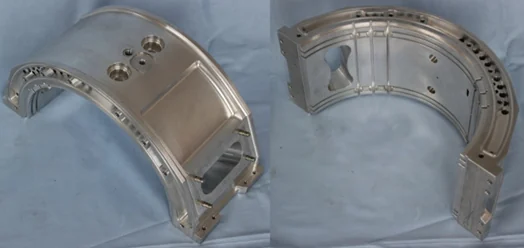
The cylinder heads are centered on side covers, to which the forces from combustion transfer and which keep the cylindricity of inner space.
The cylinder heads are water–cooled and cooling fluid is distributed via side covers and bores in the cylinder heads. Each cylinder head has one intake, one exhaust port and a pair of spark plugs. The cylinder heads are identical and interchangeable. There are notches and bores in the cylinder heads, in which, CuSn8 alloy seals are inserted. The functional prototype uses two rows of side seal and three rows of transversal seal.
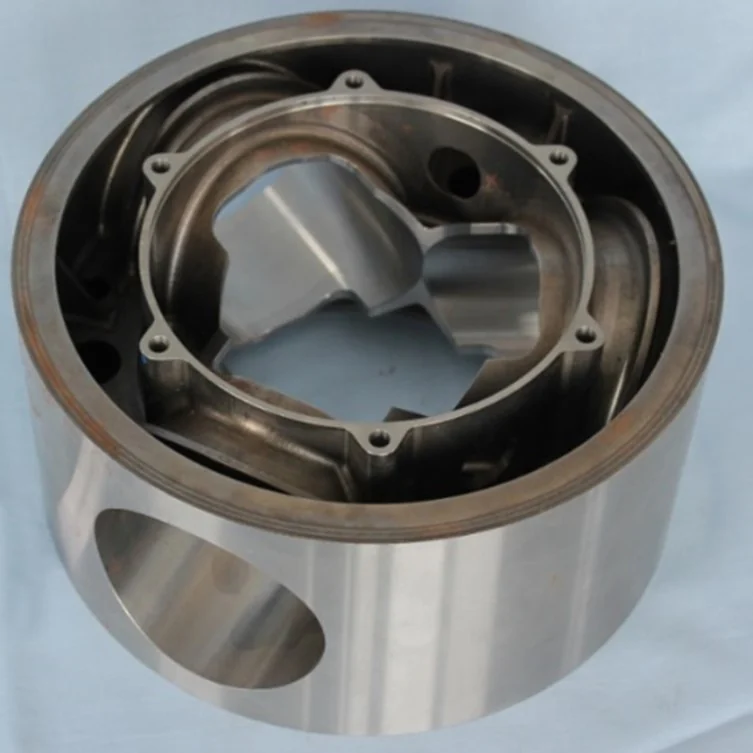
The cylinder block is made by machining of a solid block of steel. The outer cylindrical surface requires a high grade of hardness, because of sealing elements, which slide on it in addition to cylinder walls. Pulse nitriding has been applied on the complete block surface to achieve appropriate hardness.
In the engine, the cylinder block is cooled by oil spray from the crankshaft. The cylinders are ribbed for better heat exchange.
For ease of manufacturing of hard surfaces for the prototype, steel was chosen but in future, the cylinder block could be cast out of aluminum alloy and the required surfaces treated with Nikasil surface treatment. This solution would provide further weight reduction, improved moment of inertia, improved heat transfer and a tighter fitting of pistons in the cylinders.
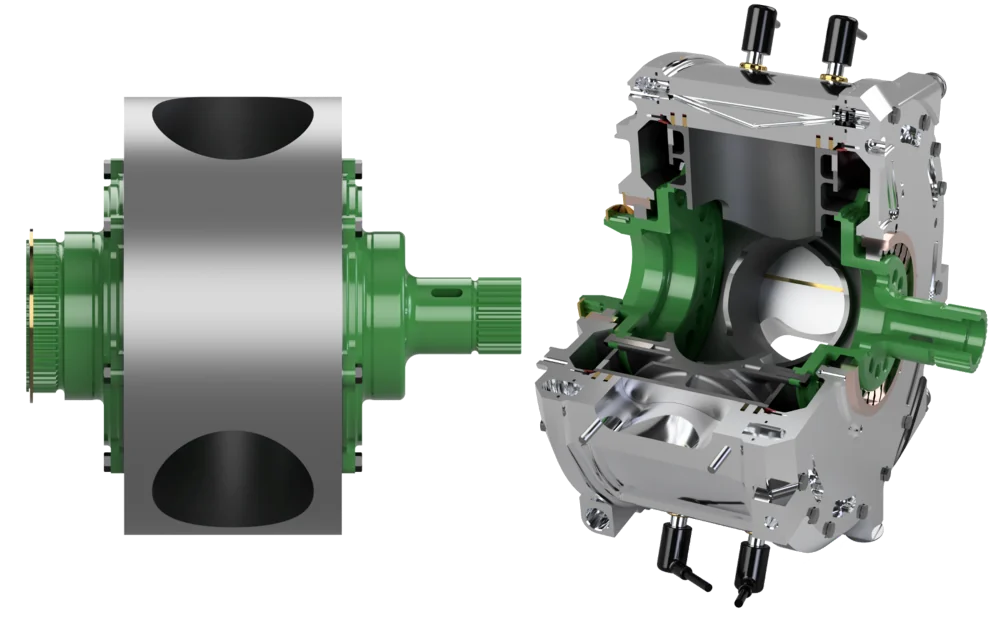
The cylinder block is attached to the hubs at both sides. The hubs transfer torque via involute splines to the reduction planetary gear set, and to the output shaft. The hubs also support the mounting of crankshaft and cylinder block in the stationary case. The cylinder block is mounted by roller bearings.
Birotary Engine Crank-train Mechanism
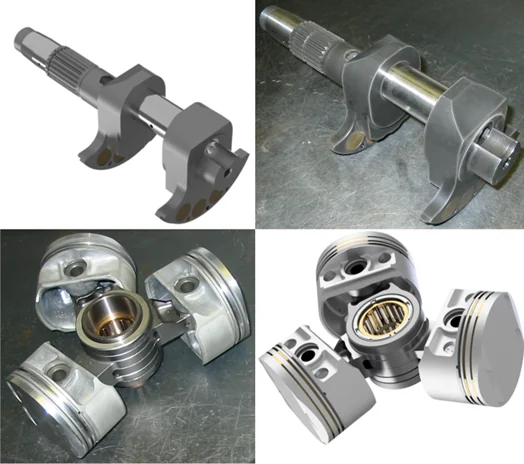
The crankshaft assembly consists of two crank arms, a pin and a high strength bolt. The crank arms and the pin are pressed together and tightened by the high strength bolt. Both crank arms are made by machining a solid block of steel that is later nitrided to achieve the hard surface required for pressed surfaces and surfaces for bearings. The pin is made of steel appropriate for bearings and it has two machined planes, which ensure alignment of the crank arms.
Connecting rods are in one piece and their big ends are fork – shaped. All three are mounted on a needle bearing. The connecting rod bearing is double row and it has a bronze bearing cage. The needles of the bearing rotate directly on the surface of the pin.
High-pressure oil is supplied to the engine via a central bore of the crankshaft. Oil is pressed into the connecting rod bearing, through which it is sprayed into the crankcase. This oil path provides lubrication of the entire crank mechanism, cylinders and bearings, and provides cooling to the pistons and the cylinder block.
The current design of the crankshaft developed for the first prototype has not undergone any stress analysis. Its design is therefore robust and oversized. Tungsten weights were used to reduce the size of the balancing weights on the crank arms. Subsequent structural analysis has shown that it will certainly be possible to design a much subtler crankshaft.
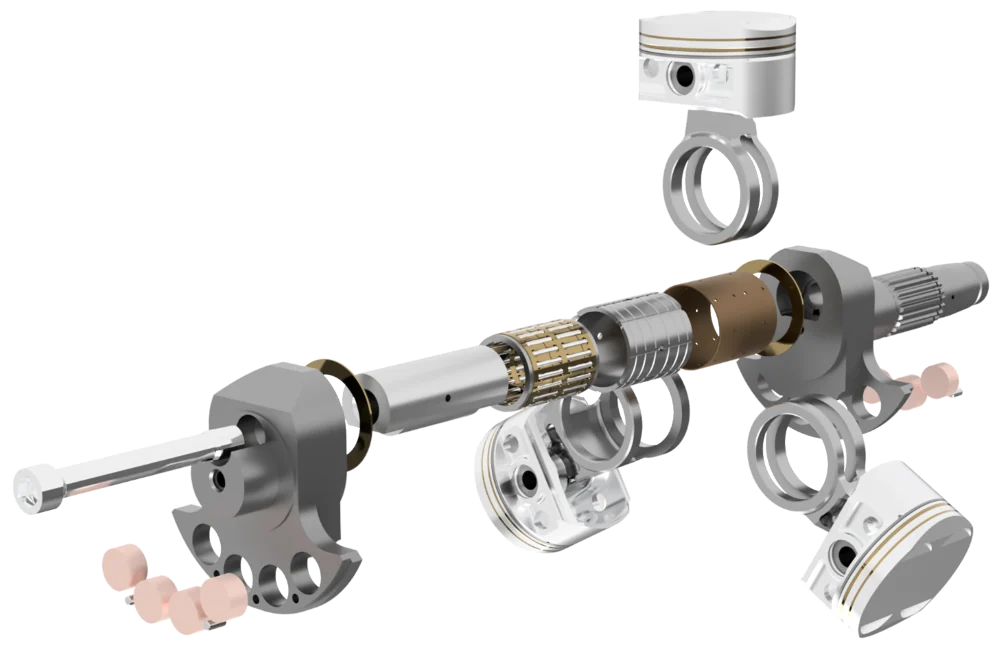
Accessories and Other Parts of the Engine
The accessories and other engine parts of the birotary engine are relatively standard. Therefore, we keep their descriptions relatively brief.

Reduction gear set
The connection between the cylinder block and the crankshaft is provided by a planetary gear set. Sun planetary gear is connected to the crankshaft by means of involute splines as is the ring planetary gear, which is coupled with the cylinder block also by means of involute splines. Four satellites of the planetary gear set are statically mounted in the gear set housing, which is cast from an aluminum alloy. The satellites are mounted on pins on cylindrical roller bearings. The ratio between the crankshaft and cylinder block is 3.
Cooling system
A standard water cooling circuit comprises a mechanical thermostat that controls the temperature of the output from the engine, a centrifugal water pump, which is driven by the gear coupling from the crankshaft and a conventional automotive radiator.
Oil system
The engine uses a pressure dry sump lubrication system and operates without suction pumps. The oil is forced into the expansion tank by the pressure in the crankcase. The oil system also consists of a gear pump driven from the crankshaft in addition to a reduction valve, oil filter and oil cooler.
Electrical components
It is appropriate to mention the location of the alternator, the rotor of which is mounted directly on the crankshaft. The starting system uses the standard 12V starter with a fixed pinion which drives the crankshaft through a freewheel clutch. Ignition and injection is controlled by ECU.
Induction and fuel system

Formation of the fuel mixture is provided by indirect injection. Each intake manifold has one injector in the intake port and one injector right behind the throttle body. Fuel is supplied to the injectors by a common fuel line.
Birotary Engine output end
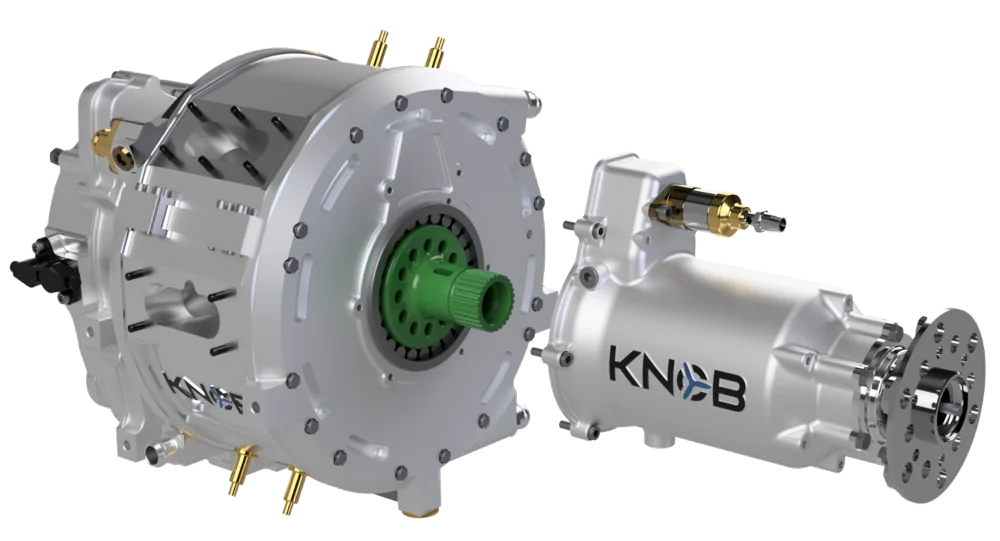
The output torque is taken from the engine block in this case. For aviation purposes, which is the intention of the prototype, reduction of the speed to a propeller is required. Gearing between the cylinder block and the crankshaft thus also serves as a speed reduction on the propeller shaft. In the front of the prototype engine, there is a slip clutch, equipment for the adjustment system of the propeller and other equipment associated with the installation of the engine to the airplane.
